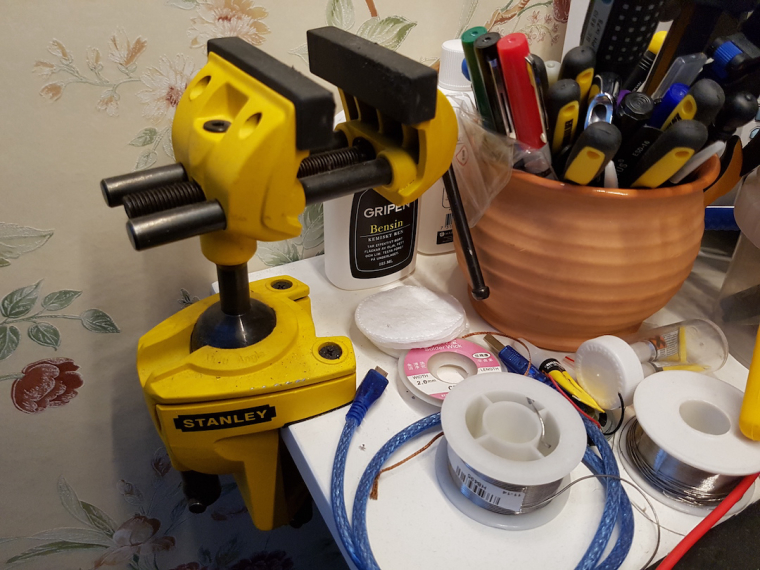Your workshop :)
-
Fixed the link; anyway it is a recurring promotion because I have seen that price for quite a while :)
@gohan Then you can safely lean back and wait for my review. ;)
-
@gohan You are right. I just ordered the thing. With the case and the builtin battery it looks like a real tool. The price seems to be a promotion. Normal price is >30$.
You shoult by the way fix the link. Makes it easier for others to order it.I am looking for a soldering vise. Has anyone tested this one: https://www.amazon.de/dp/B00196RV9C/ref=wl_it_dp_o_pC_S_ttl?_encoding=UTF8&colid=2COJS1QZ6SUVJ&coliid=IQEGMI1GM2R46 ?
@Jan-Gatzke I have this one:
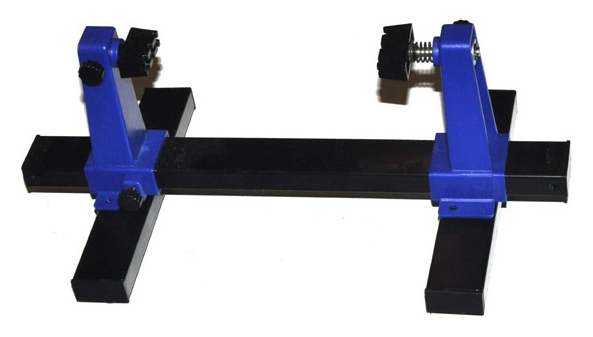
It's able to hold all kinds of PCB sizes and can rotate easily.
Tip for soldering through-hole components from the back without them falling out:
Place all components on the top of the PCB and put a sponge or scotch-brite on top of them. Fix to the PCB with some rubber bands and swap the PCB to solder! -
@Jan-Gatzke I have this one:

It's able to hold all kinds of PCB sizes and can rotate easily.
Tip for soldering through-hole components from the back without them falling out:
Place all components on the top of the PCB and put a sponge or scotch-brite on top of them. Fix to the PCB with some rubber bands and swap the PCB to solder!@Yveaux I saw that thing on Amazon. There was a review saying the brackets would melt easily when using hot air. Did you use this with hot air?
-
@Yveaux I saw that thing on Amazon. There was a review saying the brackets would melt easily when using hot air. Did you use this with hot air?
@Jan-Gatzke said in Your workshop :):
There was a review saying the brackets would melt easily when using hot air.
When you clamp a PCB in it only the edges are held by the plastic brackets.
Unless you are blowing directly on the edge of the PCB where it is held I can imagine this could be a problem, but then, why don't you shift or rotate the PCB to get away from the brackets?Did you use this with hot air?
Yes
-
if you want the case it costs 10$. The one I posted it seems to have pretty much the same specs, but it can detect also IR and probably some more components. It also comes with a lithium battery instead of the classic 9V, color screen and the case looks much better :)
@gohan Be aware that there are quite a few different versions around. The one I posted has a rotary encoder to select and operate the pwm and frequency functions. The perspex casing fits well with the rest of the nerdy testboxes I own (dummy load, power supply, a few function generators, frequencycounter ) All a lot of functionality for very little..
-
I noticed the many of you have an oscilloscope on their desk. What exactly do you use these for? There seems to be nothing under 200$ and I wonder if it is worth it.
-
I noticed the many of you have an oscilloscope on their desk. What exactly do you use these for? There seems to be nothing under 200$ and I wonder if it is worth it.
@Jan-Gatzke For MySensor I use it mostly for measuring response times and get a general idea of what is happening timewise. Especially if you have multiple event happening at the same time. Also for getting a grip on low power

it gives a lot of information which would be very hard to measure with any other instrument. (for my other hobby, analog audio design, I couldn't live without it. ;-))
A few considerations:
- It can be rather complicated using a scope in first instance. (a steep learning curve)
- Unless you are just curious and want to educate yourself I would strongly disencourage buying a cheap instrument. Better to study a few manuals of serious > €300 instruments, save a little and buy the thing you need (or can't resist). 10 years ago you had to put down > €1000 for something reasonable.
-
@Jan-Gatzke For MySensor I use it mostly for measuring response times and get a general idea of what is happening timewise. Especially if you have multiple event happening at the same time. Also for getting a grip on low power

it gives a lot of information which would be very hard to measure with any other instrument. (for my other hobby, analog audio design, I couldn't live without it. ;-))
A few considerations:
- It can be rather complicated using a scope in first instance. (a steep learning curve)
- Unless you are just curious and want to educate yourself I would strongly disencourage buying a cheap instrument. Better to study a few manuals of serious > €300 instruments, save a little and buy the thing you need (or can't resist). 10 years ago you had to put down > €1000 for something reasonable.
@AWI Troubleshooting power probolems with the nrf24 is a good example, thx. I think at the beginning it is more a nice to have than a must have. I am always curios for such things. Still I don't want to buy trash. I will read a bit and watch ebay for good offers. Thx for your explanation.
-
As i'm actually tidying up thing, i can show some pics where i spend some tinkering time.

I'm planning to renovate it, because i'm also missing place for my 3d printer and some others stuff.
There is a lathe and a drill but it's for quick hurry work, there is another room for more dirty mechanical stuff.. but i can't show you, it's dirty :)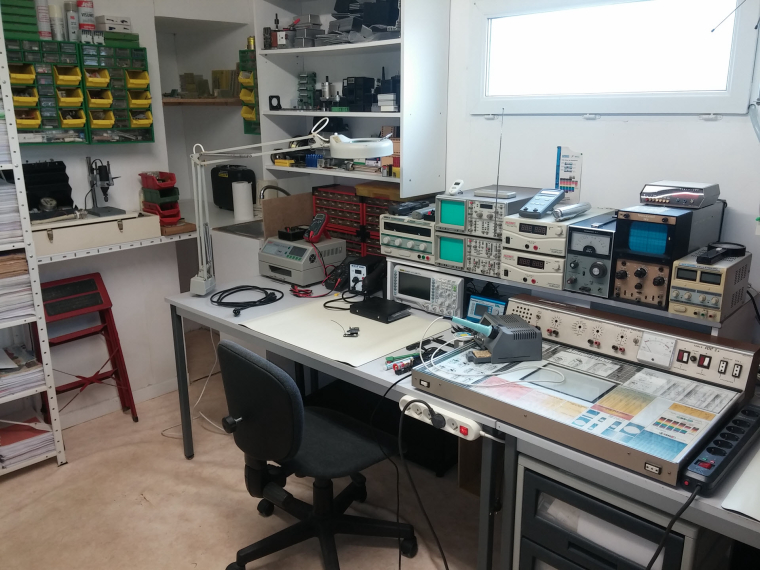
My favorite tools :- my super mini TS100 solder iron. But if you ask me, for tiny SMD like DFN for instance, i prefer my Weller Magnastat with a 0.2mm tip. The tip is thinner even if i've bought the thinnest tip for the TS100.
- hacked Rigol Ds1054Z. Really worth the price!
- hacked T962 reflow oven. Very cool too (better for leaded solder though)
- smd books
- my magnifier of course!
for the rest, there are also great tools like power supply, a spectrum analyzer, generators..

My 1st 3d printer, i like it, works very well. I'm planning to build a new, bigger and enclosed one.Talking about soldering vise, i have this old tool i don't use it often, but when i need it, i'm happy to have it.
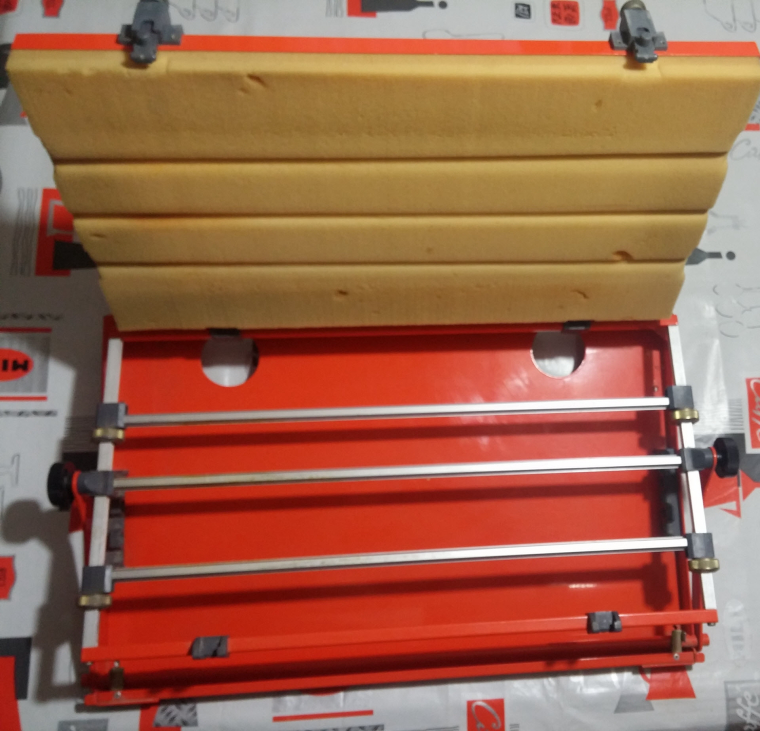
I'm pretty sure this is not hard to reproduce with some T-Slots and so on ;)When you have a 3d printer, this thingiverse design can be helpful, for debugging stuff, or can be used for soldering but with care else plastic would melt.
http://www.thingiverse.com/thing:801279 -
I've been using new induction solderind gun for the last month. It is fantastiс. :satisfied: It has 120W power and warms up to 330С during 6-8s :astonished:
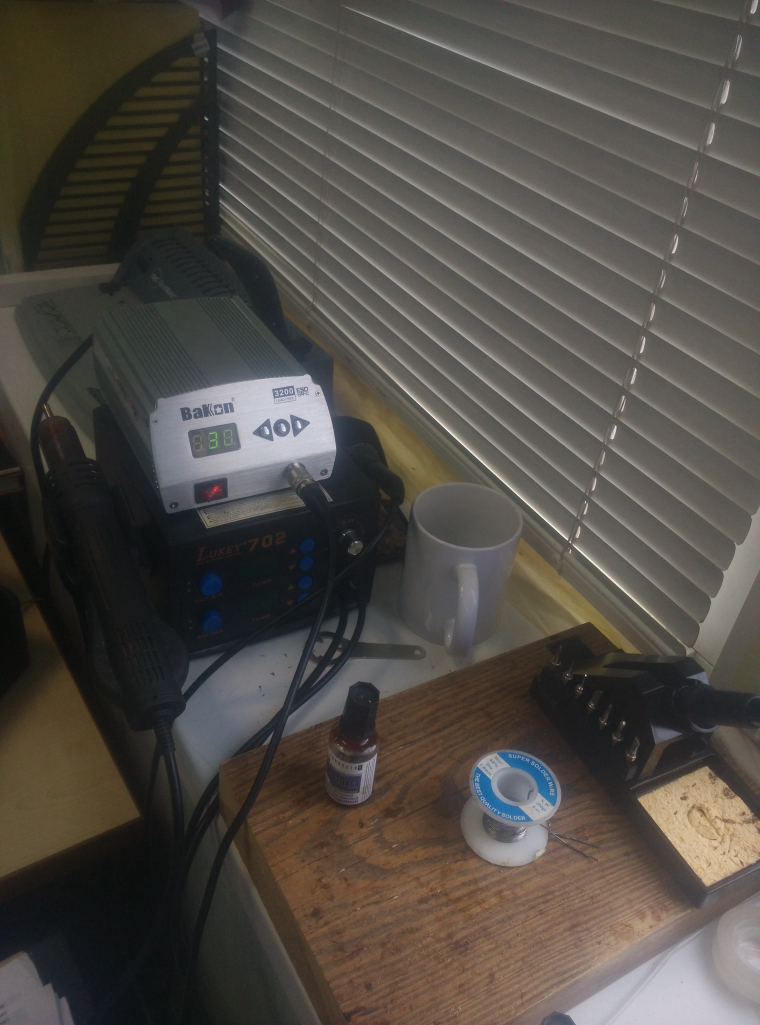
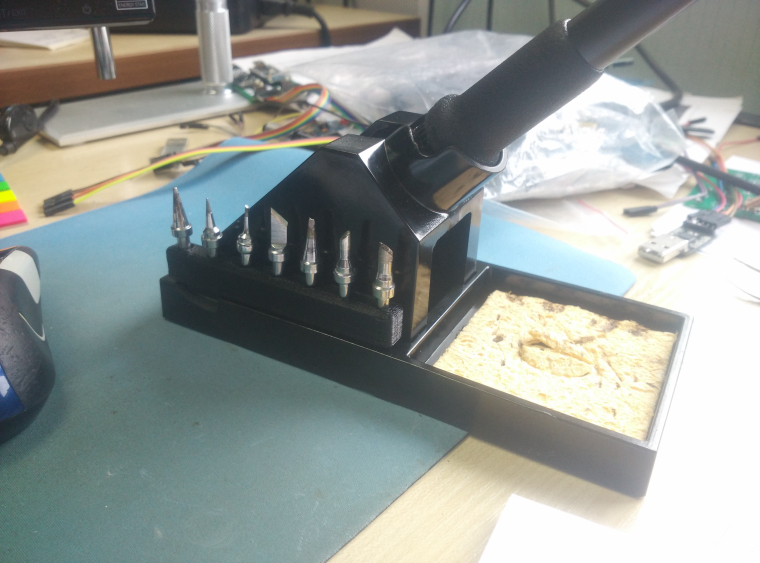
-
I've got the feeling this thread is going to be extreme expensive for me. :)
-
As i'm actually tidying up thing, i can show some pics where i spend some tinkering time.

I'm planning to renovate it, because i'm also missing place for my 3d printer and some others stuff.
There is a lathe and a drill but it's for quick hurry work, there is another room for more dirty mechanical stuff.. but i can't show you, it's dirty :)
My favorite tools :- my super mini TS100 solder iron. But if you ask me, for tiny SMD like DFN for instance, i prefer my Weller Magnastat with a 0.2mm tip. The tip is thinner even if i've bought the thinnest tip for the TS100.
- hacked Rigol Ds1054Z. Really worth the price!
- hacked T962 reflow oven. Very cool too (better for leaded solder though)
- smd books
- my magnifier of course!
for the rest, there are also great tools like power supply, a spectrum analyzer, generators..

My 1st 3d printer, i like it, works very well. I'm planning to build a new, bigger and enclosed one.Talking about soldering vise, i have this old tool i don't use it often, but when i need it, i'm happy to have it.

I'm pretty sure this is not hard to reproduce with some T-Slots and so on ;)When you have a 3d printer, this thingiverse design can be helpful, for debugging stuff, or can be used for soldering but with care else plastic would melt.
http://www.thingiverse.com/thing:801279

